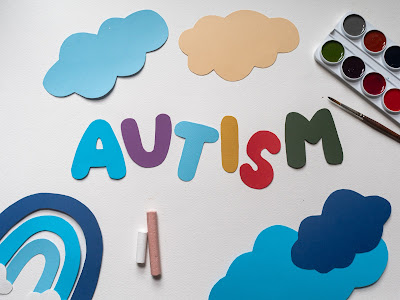Music Therapy and Autism
Music therapy is well known to be effective in treating those with developmental and intellectual disabilities, but it is especially powerful for those with Autism Spectrum Disorder. Not only are people with ASD typically more musically inclined, but the adaptive abilities of music therapy allow for sensory-friendly interactions that successfully target treatment goals. There is a wide array of modern research devoted to music therapy in the treatment of Autism.
What is ASD?
Autism spectrum disorder refers to a broad range of conditions characterized by challenges with social skills, repetitive behaviors, speech and nonverbal communication. According to the CDC, 1 in 36 children are diagnosed with ASD. Other conditions that fall under the ASD “umbrella” include autism, Asperger Syndrome, and Pervasive Developmental Disorder (PDD). The ASD umbrella is also comprised of 3 different levels according to level of support needed due to symptoms. These levels are :
- Level 1: Requiring Support
- Level 2: Requiring Substantial Support
- Level 3: Requiring Very Substantial Support
The symptoms of ASD include social or communication challenges and restricted or repetitive behaviors. Social challenges might look like the inability or avoidance of eye contact. Restricted or repetitive behaviors might include rocking body movements, resistance to change in routine, or extreme interest in specific topics. Another characteristic of ASD is sensory needs. Sensory needs are sensitivities to light, sound, taste, touch, smell, and body awareness. Often times, a person with ASD will feel overstimulated or experience “sensory overload” when a stimuli is too powerful for them. This is called hypersensitivity. Other times, someone with ASD might feel the need for a specific sense like pressure on their body or the need for movement. This is called hyposensitivity, when a stimuli is under-responsive.
Treatment for the symptoms of ASD include a wide variety of therapies including occupational, speech, physical, and music therapy. There are also organizations and programs within schools and communities specifically designed to meet the needs of children and adults diagnosed with ASD. But just because someone is on the autism spectrum does not mean they require therapy. Often times, children will participate in therapy or school programs to work on life skills to one day live independently. Others do require long-term care in which they might attend a day or residential facility that offers treatment groups and in-house career opportunities while providing necessary support.
Music Therapy for ASD
Music therapy is a well recognized tool for the ASD community and one of the most sought after modalities of therapy when accessible. People with ASD often show a heightened interest in music and have sensitivities to pitch and volume that elicit an effective and powerful response to treatment. Music therapy also targets a wide range of goal areas that can be addressed all within a single session. Music therapists can use different interventions to target social skills, sensory needs, motor skills, communication skills, and overall expression.
Communication is an area that many with ASD tend to struggle with, either receptively or expressively. Musical interactions can address both ways while also learning how to identify emotions. Music allows for the person to feel responses to what they are experiencing but also express what’s inside without having to always find the right words. Music therapists are specifically trained to learn how to illicit specific responses while keeping the client’s limitations and comfort level in mind.
Music therapy is also effective for individuals with ASD with its ability to create multi-sensory stimulation including: auditory, proprioceptive, vestibular, and tactile. Music activities achieve all of these senses with the interactive, hands-on interventions. Music therapists will include various instruments such as shakers, piano, guitar, drums, and other fun percussion instruments that have different vibrations and require different pressure when they are played. Some activities even require tools such as scarves, balls, and crafts that are made up of different textures and colors. And of course, the music always has the ability to range in volume, speed, mood, and pitch to fit different levels of need.
Final Notes
Individuals with ASD have varying levels of need and support, but they also have an aptitude for music and other areas of their interest. Music therapy has a large community dedicated to working with ASD in facilities and practices all over the United States. The partnership between music therapists and the autism community has grown exponentially with the advocacy for music therapy and the growing awareness for ASD.
Resources to learn more about autism and music therapy:
- Autism Speaks: https://www.autismspeaks.org
- American Music Therapy Association: http://www.musictherapy.org/assets/1/7/MT_Autism_2012.pdf
- Click here to learn more about Music Therapy at Minds On Music!
-Kathryn Wright, MT-BC and Rylee Carfer, MT-BC







Comments
Post a Comment